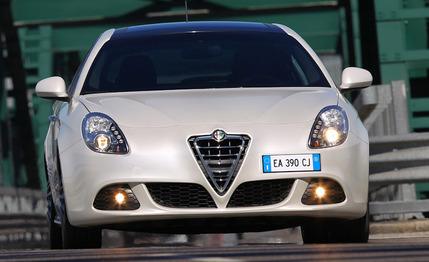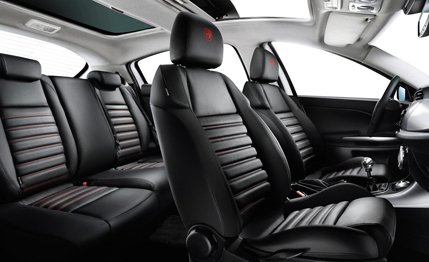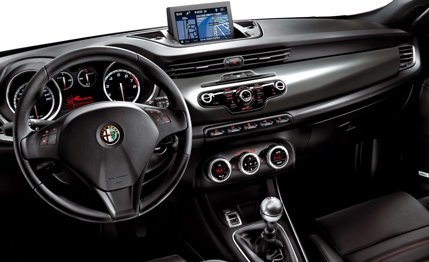
 First Drive Review
First Drive Review
We are sympathetic to the boy who cried wolf. Frankly, we’ve lost track of the number of times we have heralded the return of Alfa Romeo to the United States.


Okay, the Italian marque that established the careers of Enzo Ferrari, Juan Manuel Fangio, and Dustin Hoffman—and which celebrates its centenary this year—has managed to sneak a few expensive and exotic Alfa 8Cs over here. But the reintroduction of the line for ordinary folk, first dangled like a carrot before a donkey’s nose some 10 years ago, still hasn’t happened.


This time we will make no predictions, but we do want to tell you about a new Alfa because of what it represents. Alfa Romeo is a part of Fiat, and Fiat is calling the shots at the new Chrysler. The Alfa Giulietta is the first car to use Fiat’s new “Compact” platform, which, somewhat enlarged (as “Compact Wide”), will underpin at least seven new models from Chrysler to be launched beginning in 2012.
The Giulietta (it was going to be called “Milano,” but that’s another story) is a 171.3-inch-long, front-wheel-drive five-door hatchback with a coupelike roofline. It is an Italian interpretation of a Volkswagen Golf. Where the Golf and the GTI have sober, businesslike sheetmetal with precise straight lines, and handles and switches that seem to be hewn from solid metal, the Alfa is all curves and delicate nooks and crannies—and can have a swath of bright body color across the dashboard.
Most of all, the Giulietta looks fast—even the versions with a modest 1.4-liter engine. The top model—likely the only version that could make it to the U.S.—is fast. It has a 232-hp, 1.7-liter four-cylinder with a turbocharger and direct injection. Think Mazdaspeed 3 with the joyous sounds and the lively spirit that have always characterized sporty Italian cars.
In Europe, this car replaces the five-door Alfa 147. That design is more than 10 years old, so you’d expect the new one to be an improvement on all fronts. It is, even though it has abandoned the classic unequal-length control-arm front suspension in favor of struts and uses a simplified multilink arrangement at the rear.
Many of the suspension pieces are aluminum, part of a vigorous weight-watching program resulting in a car that Alfa says is less than 3000 pounds (about the same as its predecessor), although it is substantially bigger and includes much more standard equipment.
Fiat engineers claim the Giulietta has the best combination of ride comfort and handling in its class (their assessments mark the Audi A3 and the BMW 1-series as its closest competitors). Since we have only driven the Alfa on a smooth track at the Balocco proving ground, we can’t be sure about the ride on normal roads, but we do know that the handling is first-rate.


The car is as entertaining as it is competent. The steering is quick (2.2 turns lock-to-lock), precise, and communicative. The electric motor that provides its power assistance is located alongside the rack (rather than on the column), which eliminates the looseness of some electric power-assisted steering systems. All versions have “DNA,” Alfa’s fancy name for a three-position control for accelerator-pedal travel, steering effort, and stability-control intervention. The 232-hp engine also comes with further stability-control programming that attempts to mimic a limited-slip differential; powering out of a fast corner, you can feel it reining in the wheelspin.
Nice to be in and be seen in, as well as fast and fun to drive, the Giulietta should do well for Alfa, even if rear-seat space and comfort are sacrificed to achieve the car’s sporty style. Alfa wants to sell 100,000 of them a year, but when and whether that will include the U.S. is, as usual, still not clear.
However, it does bode well for the successors of the woeful Chrysler Sebring/Dodge Avenger, Dodge Caliber, and other models that will be built on the Compact Wide platform. The basics that make the Giulietta a good drive that feels safe and solidly built are all part of the platform.
Fiat will also supply Chrysler with its Multiair technology (electrohydraulic inlet-valve lift control), which is a feature of the impressive 168-hp, 1.4-liter turbo engine that powers the mainstream Giulietta for Europe.
So, whether we get it or not, this new Alfa shows that the on-again, off-again Italo-American pact has promise.